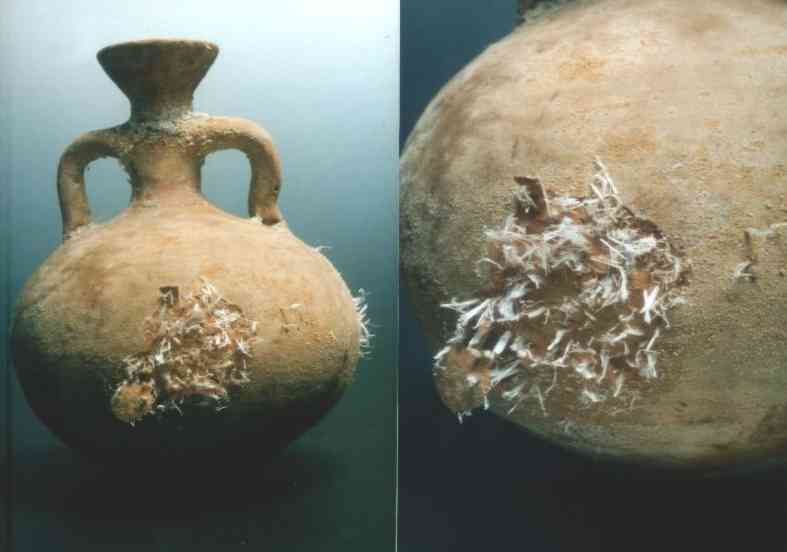Efflorescence on a terra cotta vase, Cyprus, 650 B.C
|
by Lieve Halsberghe, Belgium
lievehalsberghe@hotmail.com

photo © Lieve Halsberghe, 2001 This little bichrome vase from Cyprus dates from around 650 B.C. It is made of a polished terracotta and has circular red slip decorations. Height : 123 mm, width 94 mm. The vase was restored sometime in the past. The body is in two pieces and the neck is also glued on. After derestauration it became obvious that the top piece is not the original of this vase, but comes from another object. Reconstruction of vases with pieces of different objects is nothing new in the world of the antiques market, but has been applied for centuries. In this case, both pieces have been filed down to make a match. In fact, if one compares with vases of that period, one notices that the neck is too short, there is a little rim missing.
The vase has been kept on depot at the Royal museum of Mariemont in Belgium
for several decades. The crystals have been identified by XRD as calclacite (calcium acetate chloride pentahydrate). There is also calcite, halite and gypsum present in the samples tested. It is obvious from the photographs how destructive the crystals are: they literally eject large and small pieces of terracotta. The whole object is covered with smaller and larger crystals, even on the inside. The cause of this deterioration is probably the corrosive action of organic carbonyl vapors from the the display case construction materials on the carbonatic elements of the ceramics (primary or secondary calcite). Residues of other salts enhance the formation of these organic-inorganic mixed salts. In this case, it is very likely that the object was cleaned after excavation in a solution of hydrochloric acid, to eliminate the calcite incrustation that had formed in the soil over the centuries. Since thorough rinsing is rarely executed, lots of the acid remains in the body, dissolving the lime and forming calcium chloride salts. |
| [ Page up ] | [ Home ] | [ Search ] | [ Webmaster ] |